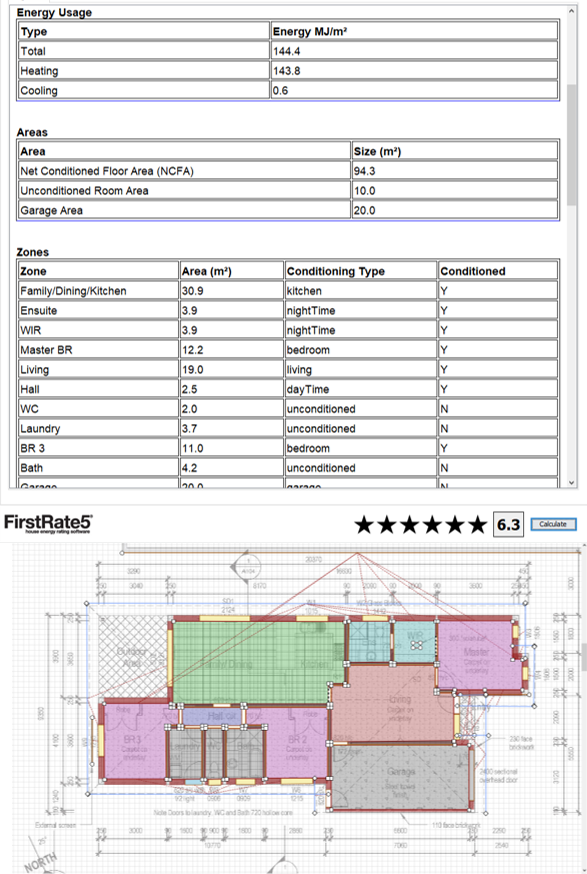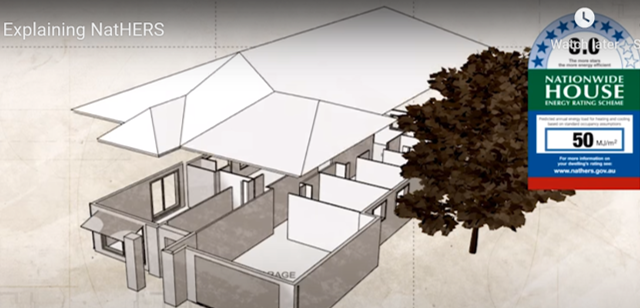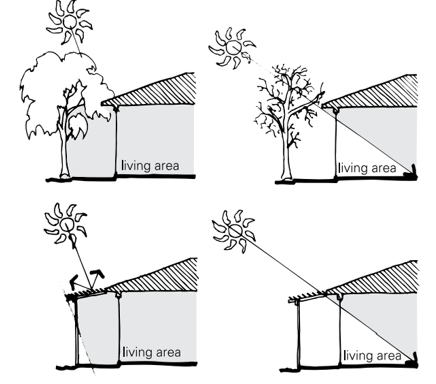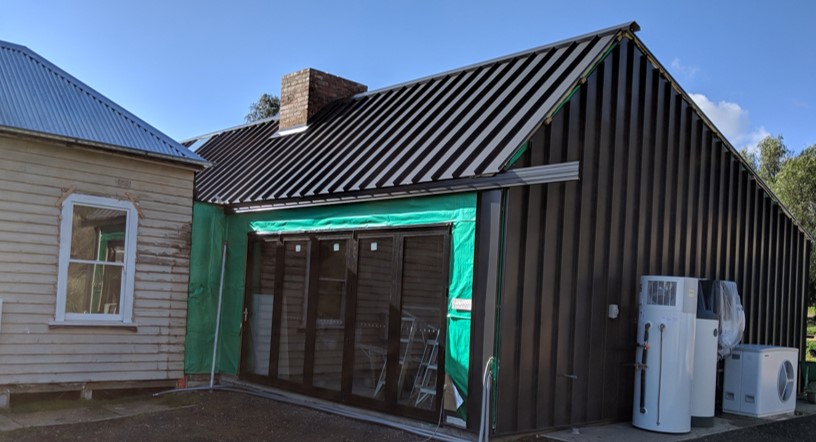Holistic Approach
High thermal performance design is required by the Australian National Construction Code (NCC). The thermal energy rating of your new building requires a Star Rating of at least 7. Also required are energy efficient appliances, called ‘Whole of Home’ energy assessment.
Take a holistic approach to your project design starting with high thermal performance design. Explore whether you can operate your heating, cooling and hot water systems largely from your own solar power.
Understand your options for high thermal performance and ‘Whole of Home’ assessment before undertaking your Star Rating to save time and money.
Your decisions around heating and cooling systems depend on the heat load of your home. Your decisions around building design and the elements of your building will affect your heat loads. This includes your building structure, orientation, foundation, floors, walls, roofs and windows.
If renovating, take the opportunity to create high thermal performance design for your new section. Then, add energy efficient appliances only.
Choose high performing insulation and window glazing because ceilings and windows account for around two thirds of your heat loss. Read more: improve house heat loss
Improve your thermal performance Star Rating with good shading, house orientation and room layout.
Contact us to assist your thinking about thermal performance design, and ‘Whole of Home’ appliance options.


Thermal Performance Star Rating
The thermal performance Star Rating measures the efficiency of your building design and describes the likely heating or cooling loss from normal use over one year. It is like a Star rating for your fridge or dishwasher identifying energy efficiency.
To gain 10 Stars out of 10, your home would need to be completely passive requiring no mechanical heating and cooling equipment. In a state like Victoria with cold winters and hot summers, this is very difficult to achieve. However, high thermal performance of 7 Stars can be achieved through good building design. More information: NatHERS
Thermal Assessment
For a thermal assessment to be undertaken, you need to provide the following building plans:
- Site plan
- Floor plan
- Elevations
- Sectional views
- Electrical plan
Also, key elements of your building structure need definition including:
- Floor types
- Wall types, external and internal
- Ceiling types
Building Details
Your home design requires many decisions that all affect your home’s thermal performance including:
- Floor, wall and ceiling insulation
- Ceiling and wall colours
- Window frames and glazing types
- Roof and clerestory windows
- External and internal doors
- Thermal bridging
- Air tightness
- Floor coverings
- Window coverings
- Light fittings that penetrate ceilings
- Sealed or unsealed exhaust fans
- Ceiling fans
- Shading
Important Factors Affecting your Star Rating
Consider the following, which have a significant impact on your Star Rating:
- Ceilings
- Windows and shading
- Walls and floors
Looks at these specific areas:
- Window coverings particularly over single glazed windows
- Installing larger windows on the windward side and smaller windows on the leeward side for better natural ventilation
- Minimizing downlights that penetrate your ceilings
- Installing ceiling fans to aid summer cooling
- Sealing exhaust fans to eliminate thermal bridging to the outside
- Insulating walls and floors


Local Climate
Your thermal performance design starts with your local climate. Think through your building’s orientation to the sun and prevailing wind.
Victoria, for example, has a mild or cool temperate climate characterized by large temperature swings (diurnal range) between winter and summer. For a good energy rating you need a lot of northern windows, less eastern and western windows and minimal southern windows. This will maximize sunshine radiation and minimise heat loss through windows in winter.
A house with good thermal performance and Star Rating of 6 or more lends itself to all-electric heating, ventilation and cooling solutions. These solutions can be powered largely by your solar panels.
Hydrosol specializes in all-electric solutions including hydronic heat pumps. Hydronic heating is the best form of heating because it is silent and radiant. It does not blow heated air that can cause respiratory issues for asthma sufferers. Also, heat pumps can reverse cycle so can provide summer cooling. This is effective in a mild or cool temperate climate, particularly with ceiling fans.
